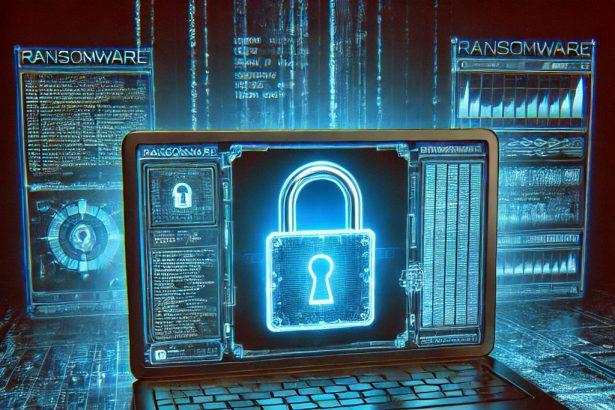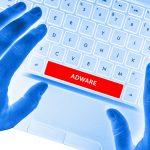AntiHacker is a malicious ransomware strain belonging to the Xorist family. It encrypts user data and appends the extension .antihacker2017, demanding payment for file recovery. Recent discoveries indicate it emerged around July 21, 2025, targeting users worldwide.
Threat Overview Table
| Attribute | Details |
|---|---|
| Threat type | Ransomware / Crypto Virus / File locker |
| Encrypted file extension | .antihacker2017 |
| Ransom note file name | КАК РАСШИФРОВАТЬ ФАЙЛЫ.txt |
| Associated email | antihacker2017@8ox.ru |
| Detection names | NANO‑Antivirus (Trojan.Win32.Xorist.dxuuhl), Skyhigh (SWG) Artemis!Trojan |
| Symptoms of infection | Files inaccessible, newly appended file extension, ransom pop‑up, wallpaper changed |
| Damage | Encrypts critical files; no free decryptor available |
| Distribution methods | Email attachments, torrent sites, malicious ads |
| Danger level | High – irrecoverable data without backups |
| Removal tool | SpyHunter Download link |
Detailed Threat Analysis
How I got infected
AntiHacker spreads through typical ransomware methods: malicious email attachments (often Office docs with macros), torrent sites, and malvertising. Once a user opens the infected file, the ransomware silently downloads and installs itself.
What does it do
- Encrypts files—adds
.antihacker2017, locking them - Changes wallpaper to display a ransom message
- Shows pop-up ransom note and saves the same note as
КАК РАСШИФРОВАТЬ ФАЙЛЫ.txt - Instructs victims to contact via
antihacker2017@8ox.rufor the decryption key — with only 50 attempts allowed
Ransom note text
The wallpaper and ransom notes claim the victim visited illicit or adult websites. File decryption requires a key obtained by contacting the attacker. Victims are warned not to use antivirus software or reboot the system to avoid losing their files permanently.
Should you be worried?
Yes. This ransomware uses robust encryption and gives victims only 50 attempts before permanent data loss. Paying doesn’t guarantee decryption and only funds cybercrime. Removal prevents further encryption but doesn’t decrypt files.
Ransomware Note (Original Text)
Kombat translation from the pop-up and КАК РАСШИФРОВАТЬ ФАЙЛЫ.txt:
“Your files have been encrypted. You must contact us at antihacker2017@8ox.ru to get the decryption key. You have 50 attempts. Do not use antivirus tools or restart/shutdown the computer, or all your files will be lost forever.”
Manual Ransomware Removal Guide
Warning: Manual removal is complex and risky. If not done correctly, it can lead to data loss or incomplete removal of ransomware. Only follow this method if you are an advanced user. If unsure, proceed with Method 2 (SpyHunter Removal Guide).
Step 1: Disconnect from the Internet
- Unplug your Ethernet cable or disconnect Wi-Fi immediately to prevent further communication with the ransomware’s command and control (C2) servers.
Step 2: Boot into Safe Mode
For Windows Users:
- For Windows 10, 11:
- Press Windows + R, type
msconfig, and hit Enter. - Go to the Boot tab.
- Check Safe boot and select Network.
- Click Apply and OK, then restart your PC.
- Press Windows + R, type
- For Windows 7, 8:
- Restart your PC and press F8 repeatedly before Windows loads.
- Select Safe Mode with Networking and press Enter.
For Mac Users:
- Restart your Mac and immediately press and hold the Shift key.
- Release the key once you see the Apple logo.
- Your Mac will start in Safe Mode.
Step 3: Locate and Terminate Malicious Processes
For Windows Users:
- Press Ctrl + Shift + Esc to open Task Manager.
- Look for suspicious processes (e.g., unknown names, high CPU usage, or random letters).
- Right-click on the process and select End Task.
For Mac Users:
- Open Activity Monitor (Finder > Applications > Utilities > Activity Monitor).
- Look for unusual processes.
- Select the process and click Force Quit.
Step 4: Delete Malicious Files
For Windows Users:
- Press Windows + R, type
%temp%, and hit Enter. - Delete all files in the Temp folder.
- Navigate to:
C:\Users\[Your Username]\AppData\RoamingC:\Users\[Your Username]\AppData\LocalC:\Windows\System32
- Look for suspicious files related to the ransomware (random file names, recently modified) and delete them.
For Mac Users:
- Open Finder and go to Go > Go to Folder.
- Type
~/Library/Application Supportand delete suspicious folders. - Navigate to
~/Library/LaunchAgentsand remove unknown.plistfiles.
Step 5: Remove Ransomware from Registry or System Settings
For Windows Users:
Warning: Incorrect changes in the Registry Editor can damage your system. Proceed with caution.
- Press Windows + R, type
regedit, and hit Enter. - Navigate to:
HKEY_CURRENT_USER\SoftwareHKEY_LOCAL_MACHINE\Software
- Look for unfamiliar folders with random characters or ransomware-related names.
- Right-click and select Delete.
For Mac Users:
- Go to System Preferences > Users & Groups.
- Click on Login Items and remove any suspicious startup items.
- Navigate to
~/Library/Preferencesand remove malicious.plistfiles.
Step 6: Restore System Using System Restore (Windows) or Time Machine (Mac)
For Windows Users:
- Press Windows + R, type
rstrui, and hit Enter. - Click Next, choose a restore point before the infection, and follow the prompts to restore your system.
For Mac Users:
- Restart your Mac and hold Command + R to enter macOS Utilities.
- Select Restore from Time Machine Backup.
- Choose a backup prior to the ransomware infection and restore your system.
Step 7: Use a Decryption Tool (If Available)
- Visit No More Ransom (www.nomoreransom.org) and check if a decryption tool is available for your ransomware variant.
Step 8: Recover Files Using Backup
- If you have backups on an external drive or cloud storage, restore your files.
Automatic Ransomware Removal Using SpyHunter
If manual removal seems too risky or complicated, using a reliable anti-malware tool like SpyHunter is the best alternative.
Step 1: Download SpyHunter
Download SpyHunter from the official link: Download SpyHunter
Or follow the official installation instructions here:
SpyHunter Download Instructions
Step 2: Install SpyHunter
- Open the downloaded file (
SpyHunter-Installer.exe). - Follow the on-screen prompts to install the program.
- Once installed, launch SpyHunter.
Step 3: Perform a Full System Scan
- Click on Start Scan Now.
- SpyHunter will scan for ransomware and other malware.
- Wait for the scan to complete.
Step 4: Remove Detected Threats
- After the scan, SpyHunter will list all detected threats.
- Click Fix Threats to remove the ransomware.
Step 5: Use SpyHunter’s Malware HelpDesk (If Needed)
If you are dealing with a stubborn ransomware variant, SpyHunter’s Malware HelpDesk provides custom fixes to remove advanced threats.
Step 6: Restore Your Files
If your files are encrypted:
- Try No More Ransom (www.nomoreransom.org) for decryption tools.
- Restore from cloud storage or external backups.
Preventing Future Ransomware Attacks
- Keep backups on an external hard drive or cloud storage.
- Use SpyHunter to detect threats before they infect your system.
- Enable Windows Defender or a trusted antivirus program.
- Avoid suspicious emails, attachments, and links.
- Update Windows, macOS & software regularly.
Conclusion
AntiHacker ransomware is a serious threat—fast encryption, no free decryption available, and extremely high data loss risk. If infected, clean your system with SpyHunter first, then restore your files from backups. Without backups, recovery is unlikely.




